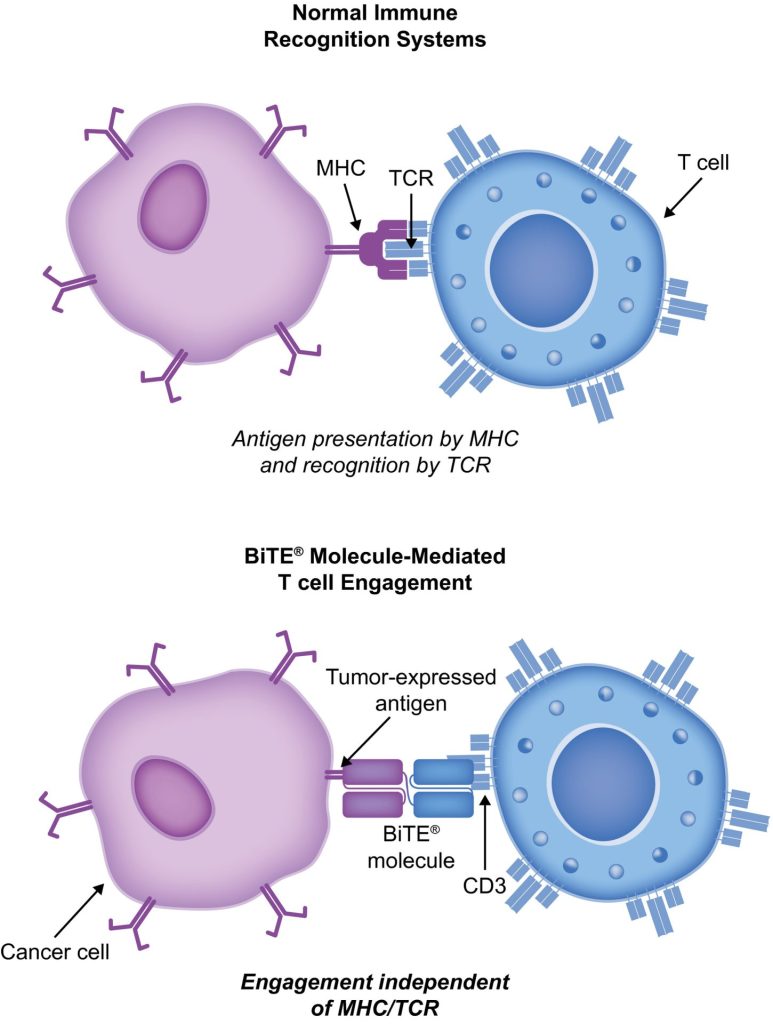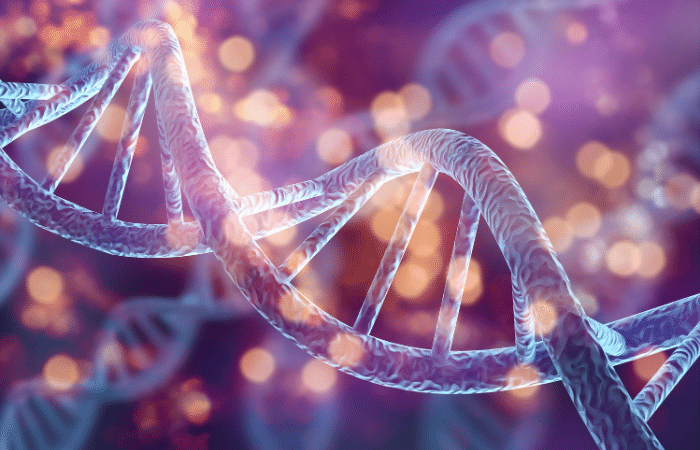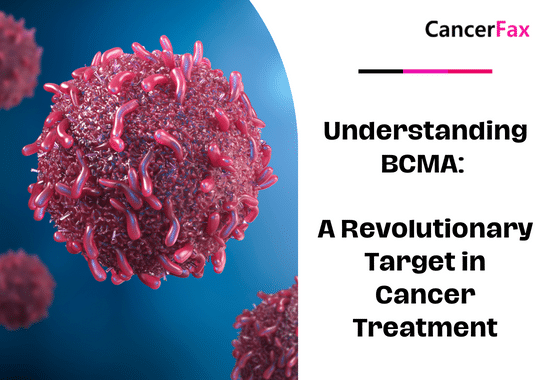Immuno-oncology is a way to treat cancer by using the body’s immune system. BiTE (bispecific T-cell engager) technology is a targeted immuno-oncology platform that binds a patient’s own T cells to cancer cells. Because BiTE technology is flexible, it is easy to make molecules that attack tumor-specific antigens, which makes immuno-oncotherapy possible. Blinatumomab was the first standard BiTE molecule to be approved. It targets CD19 surface antigens on B cells and is mostly unaffected by genetic changes or escape mechanisms inside cells. More BiTE molecules are being made to treat other blood cancers (like multiple myeloma, acute myeloid leukaemia, and B-cell non-Hodgkin-lymfoom) and solid tumours (like prostate cancer, glioblastoma, stomach cancer, and small-cell lung cancer). BiTE molecules that have a longer half-life than the standard ones are also being made. With BiTE technology, advances in immuno-oncology could make it easier to treat both blood and solid tumours and make them more effective when used with other treatments.
Wat is BiTe-therapie?
Immuno-oncology therapies are scientifically proven ways to treat different types of solid and bloedkanker. Hematologic cancers are a good fit for treatments that target the immune system because cancerous blood cells move around with immune cells. Several immunotherapie behandelingen voor kanker zijn in de maak.
Monoclonal antibody checkpoint inhibitors that stop the binding of checkpoint proteins (like PD-1 and CTLA-4) are useful against many types of cancer. They work well and are safe for many solid tumours, especially when they target PD-1. Non-small-cell lung, kidney, and bladder cancers have all been treated successfully with these drugs. But many people don’t react to checkpoint inhibitors or get sick again after taking them. Except for non-Hodgkin lymfoom, most results on hematologic cancers have been disappointing, especially for myeloma and leukaemia, where the overall response rate in approved indications ranges from 12.0% to 48.5%.8-15.
Other immuno-oncology treatments, on the other hand, have a higher success rate. Chimeric antigen-receptor (CAR) T-cell therapies change a patient’s T cells to attack a specific cellular antigen, such as CD19 in the treatment of B-cell malignancies and B-cell maturation antigen (BCMA) in the treatment of multipel myeloom (MM). CAR T-cell treatments have shown promise in treating hematologic cancers. They haven’t been as effective in treating solid tumours, but there have been some good results with neuroblastoma, human epidermal growth factor receptor tumours, and non-small-cell lung cancer. The genetic modification and in vitro multiplication of T cells take a long and complicated manufacturing process. This is a downside of this therapy because it makes it harder for patients to get this treatment quickly and in large numbers. The fact that lymphodepletion through chemotherapy preparation must be done first as a requirement for improved effectiveness is also a drawback.
BiTE-therapieën (bispecific T-cell engager) koppelen de eigen T-cellen van een patiënt aan door de tumor tot expressie gebrachte antigenen. Dit zet het cytotoxische vermogen van de eigen T-cellen van de patiënt aan om kanker te doden zonder de genen van de T-cellen te veranderen of ze buiten het lichaam te laten groeien of manipuleren. BiTE-moleculen kunnen alleen worden gebruikt als medicijnen of met andere behandelingen om ze effectiever te maken.
BiTe-werkingsmechanisme
BiTE molecules are antibody constructs with two binding domains. One recognises tumor-expressed antigens (such as BCMA, CD19, or -like protein [DLL3]), and the other, CD3, recognises T cells (Fig. 1). Two single-chain variable fragment (scFv) regions from monoclonal antibodies are connected by a flexible peptide linker to make the binding domains. The first scFv binding region can be changed to target any surface antigen, so it can be used right away to treat a wide range of tumours and can be used again later. The second scFv binding region always binds to CD3, which is a part of the T-cell receptor complex that never changes. When a BiTE molecule interacts with both a cytotoxic T cell and a tumour cell, the T cells begin to multiply. This increases the amount of effector cells and makes BiTE therapy more effective. Then, the death of cancer cells is started. BiTE molecules can get any T cells to do this because they don’t need co-stimulation or the usual processes of the major histocompatibility complex.

Blinatumomab is the first and only BiTE therapy that has been approved. It targets the CD19 receptor on both normal and cancerous B cells. It is a highly potent molecule with cytotoxic effects seen at low exposures (10–100 pg/mL)26. In its presence, T cells can perform serial-target lysis, quickly binding to and killing many cells. This is how BiTE therapies work, and it can be seen in other BiTE molecules that are still in research. In acute lymfatische leukemie (ALL), blinatumomab has been shown to be effective and safe. In 2014, the US Food and Drug Administration gave it fast approval, and in 2017, it got full approval for relapsed or refractory (R/R) B-cell precursor (BCP) ALL. In 2018, accelerated approval was given to blinatumomab for treating BCP-ALL with minimum residual disease (MRD). This was the first approval for this use. In November 2015, the European Medicines Agency also gave it a green light for BCP-ALL with a Philadelphia chromosome (Ph) that is negative and R/R. Blinatumomab is approved for R/R BCP-ALL in adults and children in 57 countries, including Japan, all countries in the European Union, Canada, and Australia.
Blinatumomab voor de behandeling van patiënten met BCP-ALL
Blinatumomab heeft de manier veranderd waarop BCP-ALL wordt behandeld. In vergelijking met chemotherapie volgens de standaardbehandeling (SOC) heeft het de algehele overleving (OS) verhoogd en het aantal bepaalde bijwerkingen (AE's) verminderd. Verschillende belangrijke onderzoeken, waaronder gerandomiseerde gecontroleerde onderzoeken, toonden aan dat blinatumomab veilig is en werkt voor BCP-ALL bij zowel volwassenen als kinderen. CAR T-celtherapie, zijn er alleen gegevens van 2 eenarmige onderzoeken (clinicaltrials.gov ID's NCT01626495 en NCT01029366) waarin 25 kinderen (leeftijd 5-22) en 5 volwassenen (leeftijd 26-60) met R/R BCP-ALL en T-cell ALL werden behandeld. Maar de resultaten zijn veelbelovend (een complete respons [CR] bij 90%, aanhoudende remissie met 6 maanden gebeurtenisvrije overleving bij 67% en een totale overleving [OS] van 78% [mediane follow-up, 7 maanden; bereik, 1-24 maanden]).
De TOWER-studie (een fase 3, gerandomiseerde, open-label studie die onderzoek doet naar de werkzaamheid van het BiTE-antilichaam Blinatumomab versus standaardbehandelingchemotherapie bij volwassen proefpersonen met recidiverende/refractaire B-precursor ALL; clinicaltrials.gov identifier NCT02013167) vergeleek de effecten van blinatumomab-monotherapie met SOC-chemotherapie bij zwaar voorbehandelde volwassenen met Ph-negatieve, R/R BCP-ALL. Omdat mensen langer leefden, werd het onderzoek voortijdig stopgezet. Bijwerkingen in de blinatumomab-groep waren dezelfde als die gezien in eerdere onderzoeken, en blinatumomab had lagere voor blootstelling gecorrigeerde bijwerkingen dan SOC.34 Blinatumomab werkt ook voor mensen met Ph-positief, R/R BCP-ALL en voor kinderen met Ph-negatief, R/R BCP-ALL.
30% to 50% of people with BCP-ALL in complete hematologic remission show persistent MRD. In the single-arm, phase 2 BLAST study (A Confirmatory Multicenter, Single-Arm Study to Assess the Efficacy, Safety, and Tolerability of the BiTE Antibody Blinatumomab in Adult Patients With MRD of B-Precursor Acute Lymphoblastic Leukaemia; clinicaltrials.gov identifier NCT01207388), blinatumomab was tested on patients with BCP-ALL in first or later complete After blinatumomab treatment, 78% of patients who were MRD positive became MRD negative. The 5-year OS study showed a median OS of 36.5 months, and more than half of those who had a complete MRD response after the first cycle of blinatumomab were still alive at 5 years, which suggests that the treatment might be able to cure some patients. AEs were seen that were linked to cytokine-afgiftesyndroom (CRS).31 Other studies, like NCT03023878 and NCT03340766, are still looking at blinatumomab in first-line settings and in combination with other treatments.
CD19-targeted treatments have been linked to failure because of the loss of CD19 antigen after treatment. The failure rates for blinatumomab range from 8% to 35%, and for CAR T-celtherapieën, they range from 39% to 65%.36-40 We don’t fully understand what causes therapy to fail, but one possibility is immunoediting, in which antigen loss is caused by a T-cell-dependent process called immunoselection, which lets tumour cells get away.41 Lineage switch and epitope loss under therapy pressure have also been suggested as ways for tumours to escape treatment. However, a recent study on epitope loss found that some CD19 isoforms that help CAR T-cells escape were already present at the time of diagnosis. This suggests that combining treatments might be helpful. Another thing that can cause immunotherapy to fail is called “inhibitory T-cell signalling.” In this case, the blocking programmed death ligand-1 (PD-L1) is interesting because it is more common in B-cell ALL cells from patients who don’t respond to blinatumomab and can make CD3 BiTE molecules less effective.43 By making a CD28/PD-L1 BiTE that triggers the CD28 co-stimulatory signal instead of the inhibitory signaling pathway that is usually seen when a T cell binds to a PD-L1-expressing cancer cell, this inhibition could be turned off.43 Dual-targeted CAR T cells are also being looked into as a way to make up for the loss of tumour antigens. This can be done by modifying each T cell with 2 CAR molecules and 2 different binding domains (dual-signaling CAR) or by putting 2 different binding domains on 1 CAR molecule at the same time (TanCAR).
Bijwerkingen met BiTE en het beheer ervan
In klinische onderzoeken met blinatumomab zijn de meest voorkomende bijwerkingen koorts, laag aantal witte bloedcellen en laag aantal bloedplaatjes. Enkele van de belangrijkste risico's zijn CRS, neurotoxiciteit en medicijnfouten. Neurotoxiciteit kan ook optreden bij CD19-specifieke CAR T-celbehandelingen, maar mogelijk niet vanwege CD19. De resultaten van een nog lopende fase 1/1b-studie over CD20/CD3-doelen toonden aan dat CZS-AE's van graad 3 of hoger zeldzaam waren (3% van alle graad 3-AE's). Meestal is de reactie van blinatumomab op CRS mild, maar in zeldzame gevallen kan deze ernstig en zelfs levensbedreigend zijn. Ontstekingsreacties kunnen worden verminderd met corticosteroïden. Om de kans op CRS te verkleinen, kunt u het beste vóór de eerste dosis blinatumomab een infuus met prednison of dexamethason geven en de dosis langzaam opvoeren. Dit gebruik van corticosteroïden vóór andere BiTE-moleculen heeft een reden gegeven om dexamethason als premedicatie te gebruiken bij gebruik van andere BiTE-moleculen. Het is echter niet duidelijk of dit effect kan worden toegepast op het hele BiTE-platform en er wordt gekeken naar andere manieren om met CRS om te gaan. Interleukine 6 is een cytokine dat CRS veroorzaakt en is hoog bij mensen die het hebben. Tocilizumab, dat de interleukine-6-receptor blokkeert, is gebruikt om CRS te behandelen dat erg slecht is na CAR-T-celbehandeling.49 In het ziekenhuis zijn ook tumornecrosefactorremmers gebruikt om CRS te behandelen.


